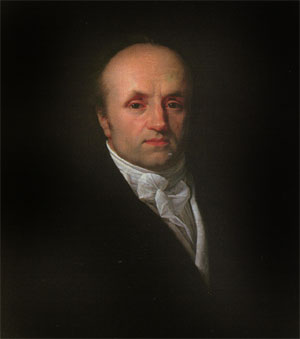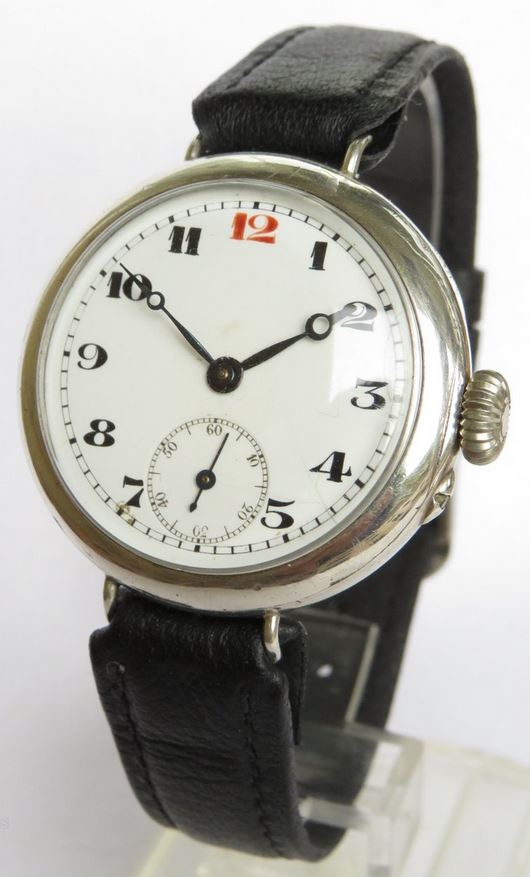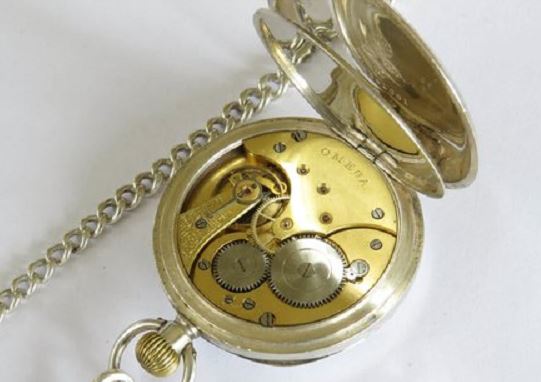Strictly speaking, my focus is on collecting English and Swiss made antique watches. Although, the founder of Breguet, Abraham Louis Breguet was born in Switzerland, the company was based in Paris, France for much of its history. In fact, it was only in 1976 that the company became headquartered in Switzerland. It could be argued that the company was strictly French and therefore doesn’t my collecting focus. However, Abraham Louis Breguet is widely considered to be one of the greatest watchmakers in history, so it does make sense to explore the company’s timeline.
Abraham Louis Breguet
Abraham-Louis Breguet was born in Neuchatel, Switzerland, on 10 January 1747. His ancestors were Huguenots, French Protestants, who fled the religious persecution of the Reformation in France. They arrived in Switzerland in the late 17th century. In 1762, at the age of 15, Breguet returned to Paris where he served an apprenticeship with a Versailles watchmaker. After completing his apprenticeship, he worked for two of the most acclaimed watchmakers of the time, Ferdinand Berthoud (1727-1807) and Jean-Antoine Lépine (1720-1814).
Breguet married into the French bourgeoisie or upper classes. His father-in-law was prosperous and the dowry he received with the marriage allowed him to set up his own watchmaking workshop in 1775. The original address was 51 Quai de l’Horloge on the Île de la Cité in Paris.
Breguet realised that mathematics was essential to success in his work. As a result, he began taking evening classes on the subject at the Collège Mazarin. His tutor had connections to the aristocracy and Impressed by Breguet’s talent and intelligence introduced him to the French Court. The connections made from this exposure helped to establish his business and soon the aristocracy became his client base.
Aristocracy
After his introduction to the court, he had the opportunity to display his work to royalty. Queen Marie Antoinette grew fascinated by Breguet’s unique self-winding watch and Louis XVI bought several of his timepieces. In 1783 the Swedish count Axel Von Fersen, commissioned a watch from Breguet that was to contain every watch complication known at that time as a gift to Marie Antoinette. The result was Breguet’s masterpiece, the Marie-Antoinette pocket watch. It took nineteen years to complete. Marie Antoinette never saw the watch as it was completed nine years after her execution. The watch is composed of 823 components and is thought to contain every watch function known at that time.
Breguet’s watches were successful not only for the quality of the movements but also for their innovative design. For example, the watch hands that he designed in 1783. Made of gold or blued steel with circle motifs hollowed out in an eccentric fashion. The distinctive design was eye-catching and elegant. They became an immediate success and the term ‘Breguet hands’ entered the vocabulary of watchmaking.
Notable inventions
There were many other notable horological inventions during Breguet’s lifetime. Perhaps, the most famous was the tourbillon, which was developed during the 1790s and patented in 1801. The tourbillion was designed to minimise the effects of gravity on timekeeping. It works by mounting the escapement and balance mechanisms in a rotating cage. By continuously rotating the entire balance wheel/escapement assembly the tourbillon averages out positional errors. It was effective for pocket watches that sat in the same position for long periods. It is not so effective for wristwatches that are constantly changing positions.
Breguet developed a shock protection system in 1790. It was known as the pare-chute and was designed to protect the delicate pivots of the balance wheel from sudden impacts. The pare-chute system consisted of a spring-mounted jewel setting that allowed the jewel to move slightly in response to impacts. By allowing the movement, the pare-chute system absorbs the energy from shocks, thereby preventing the balance staff from breaking or becoming misaligned. Although the system worked, Breguet’s pare-chute system was not widely adopted because of its complexity, cost, technical challenges and protection by patents. It was to be over a century before a comparable system was available.
Another important invention from 1795 was the over-coil or Breguet hairspring. It was a hairspring with a sharply curved outer end. The terminal curvature improves the spring’s concentric development compared to hairsprings with flat spirals., significantly improving accuracy. The Breguet hairsprings are still in use today.
Honours
Breguet became a member of the Bureau des Longitudes in 1814 and the following year gained an official appointment as chronometer-maker to the French Navy. He entered the French Academy of Sciences in 1816 as a full member and received the Chevalier of the Legion of Honour from Louis XVIII in 1819. Breguet’s name is one of the 72 names inscribed on the Eiffel Tower. Breguet’s success made him wealthy. During his lifetime, his firm produced an estimated 17,000 timepieces. Despite his success, Breguet remained grounded and always maintained a simple lifestyle. He was also known for his kindness and good humour.
Business
The business was a success, and around 1807 Abraham-Louis Breguet took on his son Louis-Antoine as his partner. The firm was renamed “Breguet et Fils” (Breguet and Sons). Louis-Antoine took over the firm upon the death of his father in 1823. When Louis-Antoine retired in 1833 (d.1858) the business was taken over by his son, Louis Clément Francois (1804–1883).
Finally, it was the end of an era for the Breguet family. Louis Clément’s son Louis Antoine (1851–1882) was the last of the family to run the business. Although he had children of his own, they did not enter the business. Louis Antoine was also a physicist, interested in the field of telegraphy. Eventually, this interest took over watchmaking and his focus turned to telecommunications. As a result, the Breguet company hired English watchmaker Edward Brown of Clerkenwell to manage the Paris factory in 1870. Eventually, Brown became a partner and, after Louis Antoine’s death, he became the owner and head of the company. When Edward died in 1895 the firm was taken over by his sons, Edward and Henry. On Edward’s retirement in the early 1900s, Henry Brown became the head of the firm.
The Breguet company was owned by the English Brown family from 1870 to 1970. After the Brown family, ownership changed hands several times during the quartz crisis in the 1970s and 1980s. In 1976, Breguet’s then-owner Chaumet closed its French factory and moved production to the Vallée de Joux in Switzerland. Since 1999, it has been a subsidiary of the Swiss Swatch Group.
Conclusion
I doubt I will ever see an antique Breguet pocket watch in my collection as they are well outside of my price range. I am more likely to see one in a museum. The company has a long and impressive history with clientele that includes royalty and aristocrats. Breguet even maintains a list of records of who purchased their watches, this included the grandfather of Sir Winston Churchill. The purchase of a Breguet watch gave you the option of having your name entered in the sales records. The company has maintained the records since the late 18th century.
Related content
Wikipedia – Breguet.


